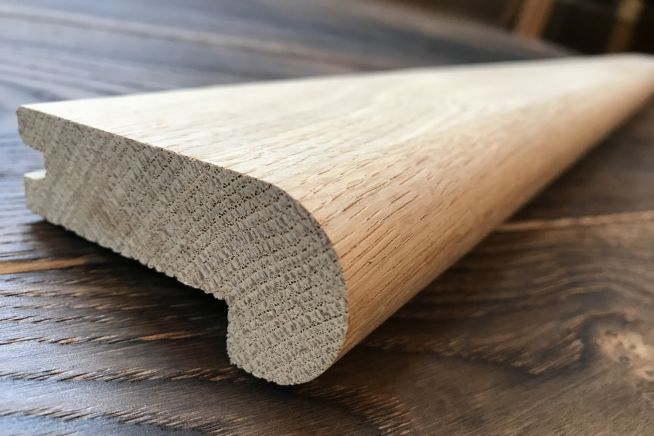
Stair Bullnose
Stair bullnose gives a finished look to stairs and helps prevent people from falling or tripping on the edge of a step. It also protects the actual stair from damage.
.
Pencil round: This stair nosing shape resembles the side view of a pencil and can work well in both modern and traditional staircases. It has rounded corners and no sharp edges, making it safer for households with children.
.
Stairs
Bullnose stairs are a popular choice for homeowners seeking to add both beauty and functionality to their staircases. Their rounded or curved design creates a smooth transition between the stair tread and riser, eliminating the sharp edge that can cause trips and falls.
.
There are several types of stair nose designs available, including full round, half-round, and pencil round. The full-round shape is a good choice for most staircases, as it offers the best fit and reduces trip hazards. The half-round shape is similar to a pencil round and has rounded corners, but it does not offer as much slip protection as the full-round option.
.
To install a stair nose, first measure the width of each stair tread and riser. Record these measurements and use them to cut the stair nosing to the proper size. Next, apply adhesive to the back of the stair nose and carefully position it onto the stair. Press firmly to secure the stair nose in place.
.
Aluminium
A bullnose is a rounded piece of trim that conceals rough edges on a surface. It is named because it resembles the nose of a bull and can be used in a variety of ways to add strength and a decorative finish to a space. It is commonly found on door frames, windows and other architectural features to enhance the look of a room.
.
Stair nosing is an important component of your staircase because it helps make the steps safer. It overhangs the top of the stair tread and provides extra surface area for people to step on, which reduces the risk of slipping or missing a step when climbing or descending. It also protects the edge of the stair tread from wear and tear over time.
.
There are several different types of stair nosing, each with its own benefits. A flush stair nose is less visible and creates a cleaner appearance, but may leave more of an expansion gap than a raised stair nosing.
.
Stair Nosing
Stair nosing is an important safety feature for stairs. It is a strip of wood or metal that covers the edge of each step, making it more attractive and less likely to create a tripping hazard. It also protects the stair from water damage and weathering.
.
There are several types of stair nosing available, including rounded and square. Pencil round resembles the side view of a pencil and has rounded corners with no sharp edges, which looks attractive on both modern and traditional staircases. It is a good choice for households with children as it reduces the risk of injury from falls or other accidents.
.
When installing a stair nose, it is important to make sure that the strip is flush with the riser and tread to avoid creating a tripping hazard. You should also make sure that the stair is free of any loose or uneven pieces. Some stair nosing options come with adhesive backing, which makes installation easier.
.
Carpet
If you want to add warmth and texture to your staircase, consider carpet. It’s also safer for kids and pets to walk on and helps protect your stairs from wear and tear. However, not all carpets are suitable for your stairs.
.
Whether you choose to use a traditional carpet or a clear strip, it’s important to consider the design, construction, and maintenance of your staircase’s carpet. The type of carpet you choose will impact how well it holds up to stairs, its appearance over time, and how slippery it is.
.
Most installers use the French tuck method of installing carpeting on stairs. In this technique, the front of the carpet is pre-curled and snaps easily over the stair nose. The rear part of the carpet is then cut to fit each riser. This is more labor-intensive than the waterfall method, but it produces a cleaner, crisper look and may offer greater durability. Some manufacturers provide 10- to 25-year warranties that cover the cost of replacing stained or damaged carpeting on stairs.
